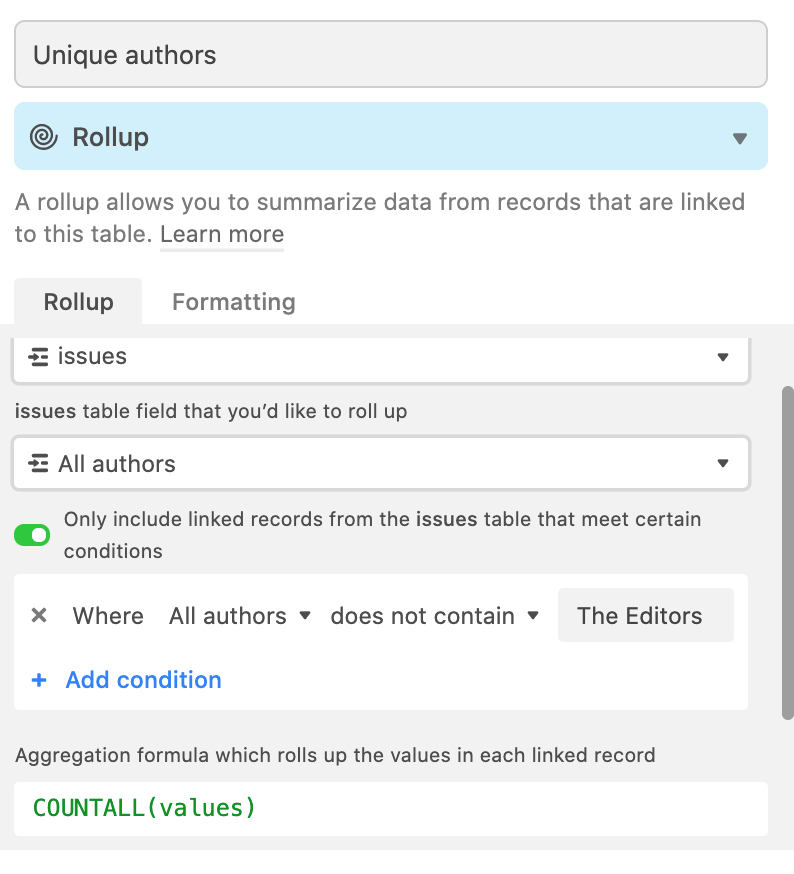I’m having trouble understanding why this isn’t working. Essentially what I’m trying to do is find out how many authors were published each calendar year and each fiscal year. There are multiple issues published each year and each fiscal year, and sometimes they don’t line up. Each issue links to a record for the year and FY, like so: (this is my issues table)

I have a second table for the year and fiscal year records: stats by year & fy. What I’m trying to do is a rollup that will count how many author records are connected to each year and FY. There are some authors that will occur over multiple magazine issues, so those duplicates need to be weeded out from the total number of unique authors for each year/FY.
However, when I use the COUNTALL(VALUES) rollup, it seems to only be calculating how many issues are connected to the record, rather than authors:

Here’s what I’m trying:

I’m not sure why this isn’t totaling “All authors”, which is the table field I’ve selected. I’ve tried other aggregation formulas and it all seems to be doing the same thing. When I select ARRAYUNIQUE(values), thinking I could count unique records that way, I get a list of the records, but it doesn’t weed out the duplicates:

What am I doing wrong?
